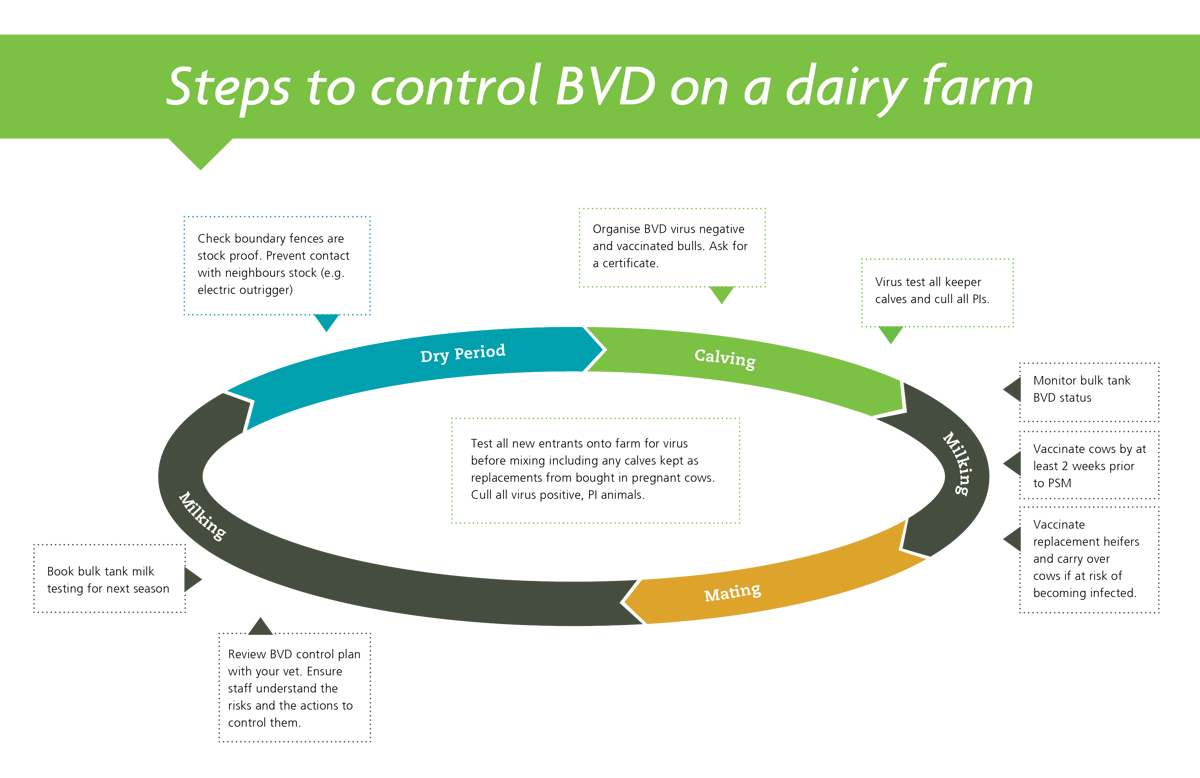BVD Virus
2 min read
Bovine viral diarrhoea (BVD) is a widespread disease impacting around 80% of New Zealand's dairy and beef herds, causing losses in reproduction, increased disease, reduced growth and milk production. Persistently Infected (PI) animals play a key role in the spread of BVD. The good news is that BVD control at a farm level is very achievable, you can take cost-effective steps such as BVD testing, monitoring the health of your herd, managing incoming animals' health, and vaccination. By following these steps, you can mitigate BVD risks, increase herd productivity, and reduce financial losses.
Bovine viral diarrhoea (BVD) is a serious and widespread viral disease in New Zealand, around 80% of New Zealand’s dairy and beef herds have been exposed to BVD.
Infection with BVD can cause reproductive losses, an increase in general disease, reduced growth rates, and lowered milk production.
Estimates put the annual losses for dairy farmers at around $127 million, with losses of $70,000 annually for each average sized infected herd ($110-180 per cow).
BVD is often a 'hidden disease' preventing full production in a number of ways, often without attracting the attention of the farmer or veterinarian.

The disease is maintained in the herd and spread to other herds by persistently infected (PI) animals. This can occur through brought-in stock or contact across the boundary. Cattle such as replacement heifers grazed off farm where they become pregnant, are also a possible PI animal source for the farm of origin.
PI animals excrete large amounts of virus throughout their lives. PI animals occur when an early pregnant (fetus less than 4 months) uninfected cow gets infected with BVD. The resulting calf is often born a PI. The cow or heifer may not have shown any obvious signs of BVD infection at the time.
The good news is that BVD control at a farm level is very achievable, practical and cost-effective.
To control BVD, the formation of PI calves must be prevented by making sure cows in early pregnancy do not become infected with the virus.
A number of things can be done to control BVD: testing animals, monitoring the BVD status of the herd, managing the health status of animals coming onto the farm, and vaccination. The good news is implementing just some of these will make a difference.
Define if BVD is in the herd
BVD diagnostic tests are highly accurate. A simple bulk milk screening test to look for antibodies against the virus is a good place to start.
Assess the level of risk of BVD coming onto the farm
Assess the level of risk in cattle coming on to the farm, including their foetuses. People, equipment and vehicles coming on to the farm.
Assess the level of risk in heifers and carry-over cows grazing off-farm, including heifers returning pregnant.
Assess the level of risk in contact - avoid cattle contact across neighbouring fences.
Action a control plan to mitigate these risks
Monitor to make sure it is working
Regular monitoring will ensure your plan is working.
Ask your veterinarian to work through this process with you – they have tools to assist.

Now’s the perfect time to check in, plan, and set up for a strong season. We’ve pulled together smart tips and tools to help you stay ahead all winter long.
Whether you prefer to read, listen, or download handy guides, we’ve got you covered with trusted tools to support your journey every step of the way.